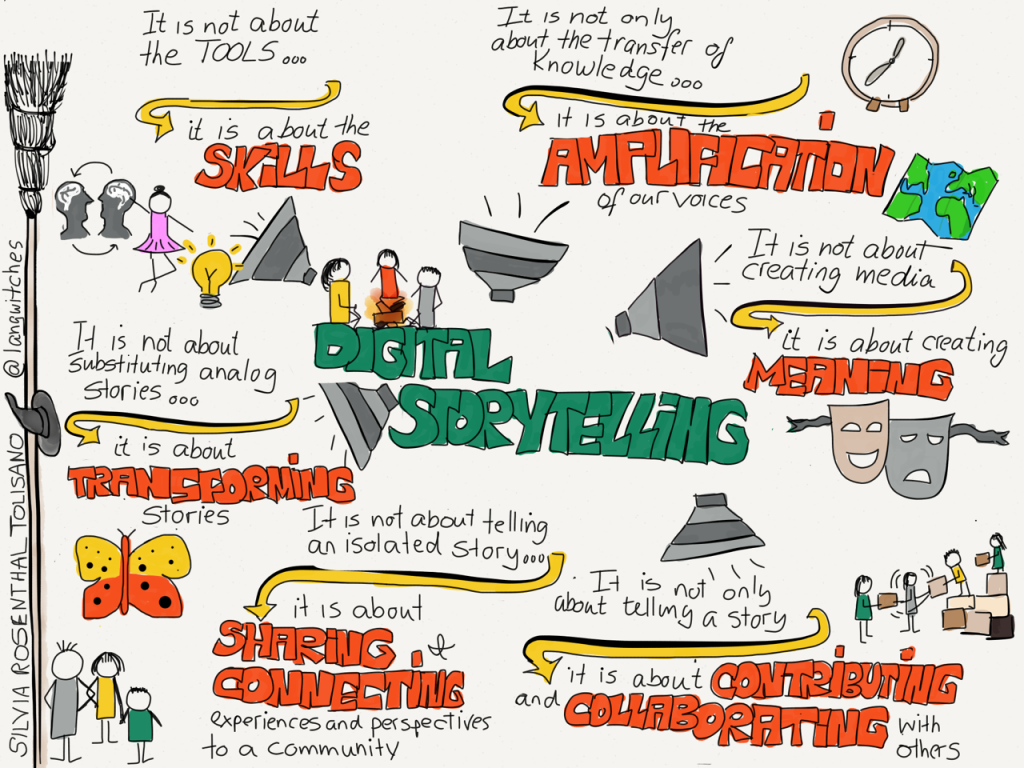Post by HLTD50 student Catastrophe Survivor
The Project Re*Vision workshop was a very empowering and emotional two days where I felt privileged to be given the opportunity to create a digital story using the tech gear – with the help of the Project Re*Vision facilitators. Because our class was awarded a $10,000 experiential learning grant, my partner and I thought it would be worthwhile to create an art work that represents the reality of our city and the issues that many of us face on a regular basis. Hence, we decided that it would be interesting to compare and contrast the areas that we live in to demonstrate how factors such as our social economic status, culture, and religion affect how we access health care in the city of Toronto.
Throughout the process and journey of making our digital story, it made me realize how digital storytelling is an innovative strategy to empower our generation, and younger generations to come. By creating a story that captures our ideas and educational concepts we’ve learnt in our seminar, digital storytelling is a chance for us students to develop our ideas further and use our strategic analysis to create a creative learning experience that is relevant to our society and our peers, especially as health studies and health humanities students. Because digital storytelling allows us to use pictures and sounds, it makes the effect of storytelling more intimate, which allows for people to connect with the storyteller on possibly more personal levels. Using technology and digital storytelling as a form of creative education and learning allows stories to be shared further: cross-culturally and cross-geographically.
*
As I prepped for this big project with my partner, I was extremely nervous as to how we can create an intimate but professional digital video that can hopefully inspire others to recognize how different factors, such as one’s social economic status and religion, can really impact the Canadian experience of accessing health care. For our video, we wanted to go outside the box, since opportunities of support and the ability to use such high-tech gears are rear for both of us, to create a digital visual that was unlike any other videos we have seen so far. Thus, we ended up deciding to do a “Draw My Life”-style video, using just a simple white board to get our message across (here’s the DML channel on YouTube for examples). We wanted our audience to be engaged with our digital story, so we thought that it would be strategic to capture our audience’s attention by having them ‘wait’ and see what we draw out for each scene.
During the process of creating of creating our digital story, we thought it was a lot easier than we anticipated. With the help of Project Re*Vision facilitators and our magnificent Professor Charise, we created our story piece by piece, starting with creating our script, recording our voiceover, filming our drawings to the whole editing process. Although, drawing was nonetheless not my area of expertise, the video was a success as we were able to draw out our message of the barriers people face depending on the different areas of which we live in.
*
One of the best parts of our two-day workshop was being able to witness and be a part of this learning experience as well as seeing the creative work that my other fellow classmates have created. Considering that many digital stories were more personal, it was remarkably empowering to see others gain the courage to share their story with the rest of us, since we have probably only known each other for a short period of time. Their courage is what made the whole digital storytelling process an inspirational experience as it allows individuals to explain their stories as more than just patients or sick/ill bodies.
In conclusion of this digital post and this course, this was definitely one of those once in a lifetime experience that I am so thankful to have. Out of all my courses that I have taken, HLTD50: Special Topics in Health Humanities – Toronto’s Stories of Health & Illness really wrapped up my post-secondary education experience as a Health Studies student and reminded me of my purpose to help implement changes to our health care system so that people of all ages, races, and cultures can feel included in our community.
